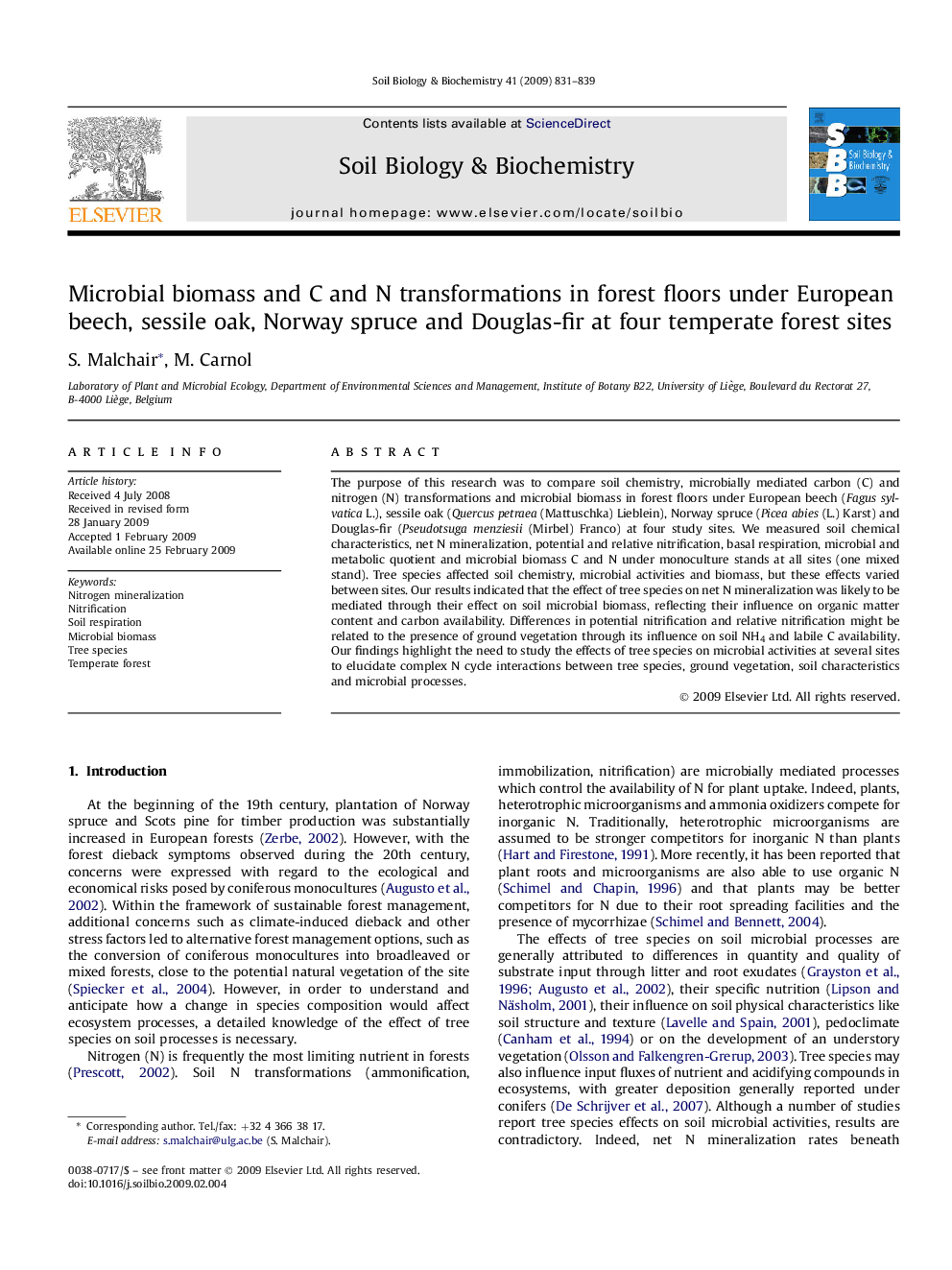| Article ID | Journal | Published Year | Pages | File Type |
|---|---|---|---|---|
| 2026545 | Soil Biology and Biochemistry | 2009 | 9 Pages |
The purpose of this research was to compare soil chemistry, microbially mediated carbon (C) and nitrogen (N) transformations and microbial biomass in forest floors under European beech (Fagus sylvatica L.), sessile oak (Quercus petraea (Mattuschka) Lieblein), Norway spruce (Picea abies (L.) Karst) and Douglas-fir (Pseudotsuga menziesii (Mirbel) Franco) at four study sites. We measured soil chemical characteristics, net N mineralization, potential and relative nitrification, basal respiration, microbial and metabolic quotient and microbial biomass C and N under monoculture stands at all sites (one mixed stand). Tree species affected soil chemistry, microbial activities and biomass, but these effects varied between sites. Our results indicated that the effect of tree species on net N mineralization was likely to be mediated through their effect on soil microbial biomass, reflecting their influence on organic matter content and carbon availability. Differences in potential nitrification and relative nitrification might be related to the presence of ground vegetation through its influence on soil NH4 and labile C availability. Our findings highlight the need to study the effects of tree species on microbial activities at several sites to elucidate complex N cycle interactions between tree species, ground vegetation, soil characteristics and microbial processes.
